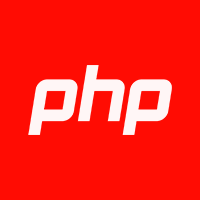-

- 什么是 Helm,如何用它部署 .NET 应用?
- Helm是Kubernetes的包管理工具,通过Chart模板简化.NET应用部署。创建Chart后,修改values.yaml配置镜像、服务等参数,调整deployment.yaml端口,可选启用Ingress。使用helminstall部署,helmupgrade更新,helmrollback回滚,支持多环境配置如values.prod.yaml,并需注意imagePullSecrets与资源限制设置。
- C#.Net教程 . 后端开发 811 2025-09-27 10:55:01
-

- 微服务中的服务网格如何实现重试策略?
- 服务网格通过sidecar代理和控制平面协同实现通信重试,无需修改业务代码。sidecar代理(如Envoy)根据预设规则判断是否重试,控制平面(如Istio的Pilot)下发配置确保策略一致。支持基于HTTP状态码、gRPC状态码等条件触发重试,避免对客户端错误无效重试。提供最大重试次数、超时时间、基数退避等参数防止雪崩,并可结合熔断限流保护后端。以Istio为例,通过VirtualService声明式配置重试策略,如设置attempts:3、perTryTimeout:2s、retryOn:
- C#.Net教程 . 后端开发 566 2025-09-27 10:52:02
-

- 云原生中的容器网络接口是什么?
- CNI是云原生中容器网络的标准接口,由CoreOS提出,通过插件化方式实现容器网络配置。它在容器创建时调用插件分配IP、设置命名空间和路由,支持Flannel、Calico、Cilium等主流方案,解耦运行时与网络,提升可扩展性与灵活性。
- C#.Net教程 . 后端开发 921 2025-09-27 10:41:01
-

- WPF中如何实现多线程数据更新UI?
- 答案:WPF中更新UI需通过Dispatcher将操作调度回UI线程,因UI元素具有线程亲和性。Dispatcher.Invoke同步执行,阻塞后台线程;Dispatcher.BeginInvoke异步执行,不阻塞,推荐使用。现代方式推荐async/await和IProgress,自动处理线程调度,提升代码可读性和响应性。
- C#.Net教程 . 后端开发 630 2025-09-27 10:38:02
-

- 什么是 Grafana,如何可视化 .NET 微服务数据?
- 使用Grafana监控.NET微服务可实时查看服务健康状态、发现性能瓶颈,因其能集成Prometheus等数据源,通过OpenTelemetry或App.Metrics收集指标,结合ASP.NETCore中间件暴露/metrics接口,实现请求延迟、错误率、资源使用等关键指标的可视化展示与告警。
- C#.Net教程 . 后端开发 664 2025-09-27 10:38:02
-

- 微服务中的分布式跟踪上下文如何传递?
- 跟踪上下文包含traceId、spanId、parentSpanId和采样标记;通过HTTP头或消息属性传递,常用Traceparent、b3等格式;利用OpenTelemetry、Sleuth等工具自动注入提取,结合W3C标准和中间件透传,实现跨服务全链路追踪。
- C#.Net教程 . 后端开发 274 2025-09-27 10:34:01
-

- 微服务架构中的事务管理有哪些模式?
- 微服务中分布式事务常用模式包括:1.2PC,强一致但性能差;2.Saga,通过补偿实现最终一致,适合长流程;3.TCC,高性能但开发成本高;4.消息队列,异步解耦,最终一致。实际多用Saga与消息队列,需重视幂等与异常恢复设计。
- C#.Net教程 . 后端开发 569 2025-09-27 10:21:01
-

- 如何用C#实现数据库的弹性连接?处理间歇性网络问题?
- 通过结合重试机制、异常处理和连接字符串优化,C#应用可在间歇性网络故障后自动恢复数据库连接。使用Polly实现指数退避重试策略,仅对SqlException中特定错误号(如2、53、10054等)进行重试,避免无效重试;配置ConnectTimeout、CommandTimeout及ConnectionResiliency参数提升连接稳定性;若使用EFCore,可通过EnableRetryOnFailure启用内置弹性重试,确保临时故障下系统持续可用,防止因短暂网络波动导致服务中断。
- C#.Net教程 . 后端开发 572 2025-09-27 10:06:02
-

- ASP.NET Core 中的端点数据源如何动态注册路由?
- 答案:ASP.NETCore通过DynamicRouteValueTransformer、IEndpointRouteBuilder或自定义EndpointDataSource实现动态路由。1.使用DynamicRouteValueTransformer可在请求时动态解析路由,适合根据上下文匹配控制器/动作;2.通过DynamicEndpointService在运行时收集并应用新路由,适用于插件式或配置驱动场景;3.自定义EndpointDataSource可从数据库等外部源加载端点,并结合Ch
- C#.Net教程 . 后端开发 690 2025-09-27 09:52:01
-

- C# 中的模式匹配位置模式如何解构对象?
- 位置模式通过Deconstruct方法解构对象,支持在switch和is表达式中进行值匹配与提取,如Person类拆解姓名、Employee嵌套Address实现多层匹配,提升代码可读性。
- C#.Net教程 . 后端开发 1008 2025-09-27 09:48:01
-

- C# 中的模式匹配常量模式如何匹配特定值?
- 常量模式用于判断表达式是否等于特定常量,支持整数、浮点数、字符串、布尔值、枚举和null,常见于switch或is表达式中,可简化条件逻辑并提升代码清晰度。
- C#.Net教程 . 后端开发 405 2025-09-27 09:44:01
-

- C#中如何使用异步方法执行数据库查询?示例代码是什么?
- 使用异步方法执行数据库查询可提升响应性和性能,结合EntityFramework的ToListAsync、FirstOrDefaultAsync或ADO.NET的ExecuteReaderAsync实现异步操作,避免阻塞主线程。
- C#.Net教程 . 后端开发 688 2025-09-27 09:24:02
-

- 如何使用 ReSharper 提升 .NET 开发效率?
- ReSharper通过智能分析、快速重构、高效导航和统一格式提升.NET开发效率:实时检测代码问题并提示修复,支持60+种安全重构与代码生成,提供跨文件搜索和调用链追踪,可自定义编码规范并自动格式化,显著减少重复劳动,助力开发者专注业务逻辑。
- C#.Net教程 . 后端开发 346 2025-09-27 09:21:02
-

- C# 中的局部函数如何实现迭代器模式?
- 局部函数结合yieldreturn可实现惰性求值的迭代器,直接访问外部变量简化逻辑。例如GetEvenNumbers中用Generate局部函数遍历并过滤偶数,避免额外传参,提升封装性和性能。
- C#.Net教程 . 后端开发 783 2025-09-27 08:32:02
-

- .NET 中的日志记录如何与云原生平台集成?
- 答案是通过结构化日志与云原生集成实现集中管理。.NET应用使用Serilog输出JSON格式日志至stdout,结合Kubernetes日志采集器(如FluentBit)或云服务(如AzureMonitor、CloudWatch)实现统一收集,并利用OpenTelemetry关联追踪上下文,确保时间戳、级别和堆栈完整,提升可观测性。
- C#.Net教程 . 后端开发 708 2025-09-27 08:31:01

PHP讨论组
组员:3305人话题:1500
PHP一种被广泛应用的开放源代码的多用途脚本语言,和其他技术相比,php本身开源免费; 可以将程序嵌入于HTML中去执行, 执行效率比完全生成htmL标记的CGI要高许多,它运行在服务器端,消耗的系统资源相当少,具有跨平台强、效率高的特性,而且php支持几乎所有流行的数据库以及操作系统,最重要的是





























